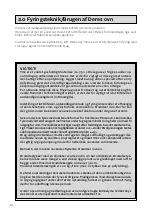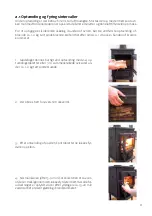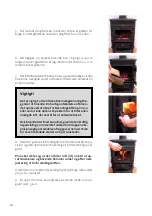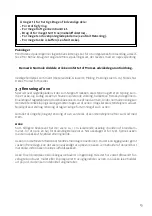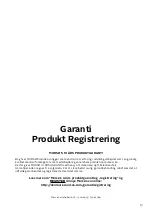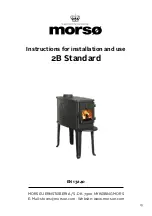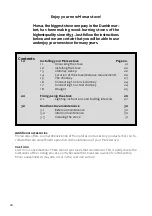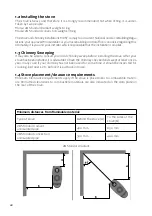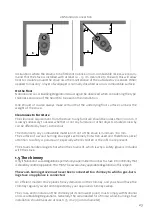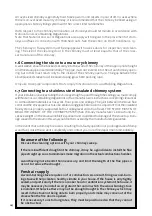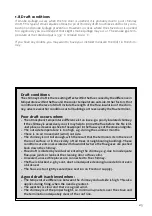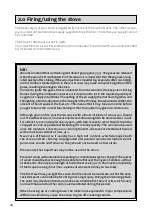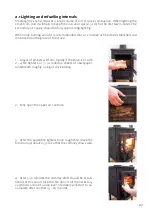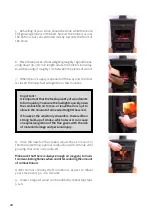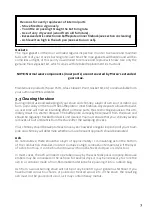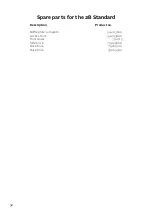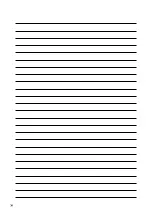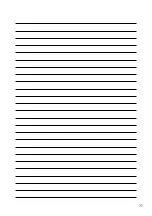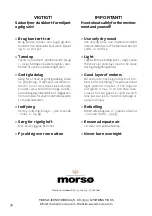
24
DK ENG
An over-sized chimney is generally hard to keep warm and results in poor draft. In cases where
there is an oversized masonry chimney, it is recommended that the chimney be lined using an
appropriate chimney lining system with the correct internal diameter.
With respect to the chimney termination, all chimneys should terminate in accordance with
National and Local Building Regulations.
Note that National and Local Regulations also apply with regard to the placement of chim-
neys and flues in connection with thatched roofs. See the section on Draft Conditions, 1.9.
The chimney or flue system must be equipped with access doors for inspection and clean-
ing. The size of the cleaning door in the chimney must at least equal to that of the cross-
sectional area of the chimney.
1.6 Connecting the stove to a masonry chimney
A wall sleeve should be bricked securely into the wall of the chimney at the appropriate height
and the stovepipe inserted centrally. The pipe must not extend into the actual chimney open-
ing, but rather must reach only to the inside of the chimney aperture. The gap between the
stovepipe and sleeve must be sealed using glass fibre packing rope.
Only use stovepipe components that comply to National and Local Building Regulations.
1.7 Connecting to a stainless steel insulated chimney system
If your installation involves taking the chimney straight up and through the ceiling, you must comply
with National, Local Building Regulations or flue manufacturers instructions concerning clearances
to combustible materials such as walls, floor joists and ceilings. The joint between the stove flue
collar and the stovepipe must also be sealed using glass fibre rope. It is important that the insulated
flue system is properly supported both at ceiling level and at roof level. THE STOVE MUST NOT
BEAR THE WEIGHT OF THE CHIMNEY SYSTEM (See chimney manufacturer’s instructions). Ex-
cessive weight on the stove will inhibit expansion and could lead to damage of the stove top. Dam-
age caused to the stove in this way would not be covered by the manufacturers guarantee.
In the event that a chimney fire occurs resulting from faulty operation or prolonged use of damp
wood fuel, close the air vent completely and contact your local fire department immediately.
Be aware of the following:
Discuss the cleaning options with your chimney sweep.
If there is insufficient draught in the chimney, it may be a good idea to install the flue
pipe straight up so as to minimise smoke migration in the actual combustion chamber.
Avoid having more bends than necessary, and limit the length of the flue pipe so
as not to reduce the draught.
Fresh air supply
A wood-burning stove requires air for combustion. As a result, firing a wood-burn-
ing stove will help create a healthy climate in your house. If the house is very tightly
sealed, and particularly if there is a cooker hood or ventilation system in the house, it
may be necessary to install an air grate in the room in which the wood-burning stove
is installed. Otherwise there may not be enough draught in the chimney, which may
result in the stove not being able to burn properly, and smoke may come out of the
stove when the fire door is opened.
If it is necessary to install air grates, they must be positioned so that they cannot
be obstructed.

